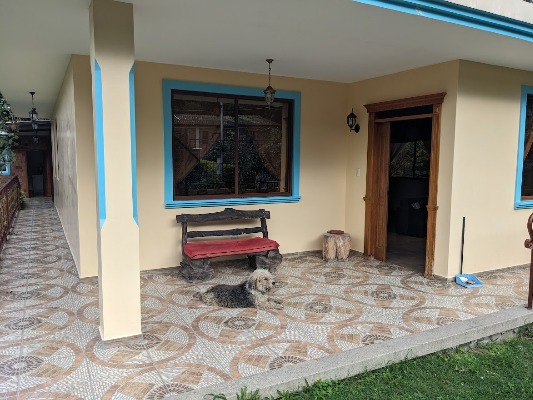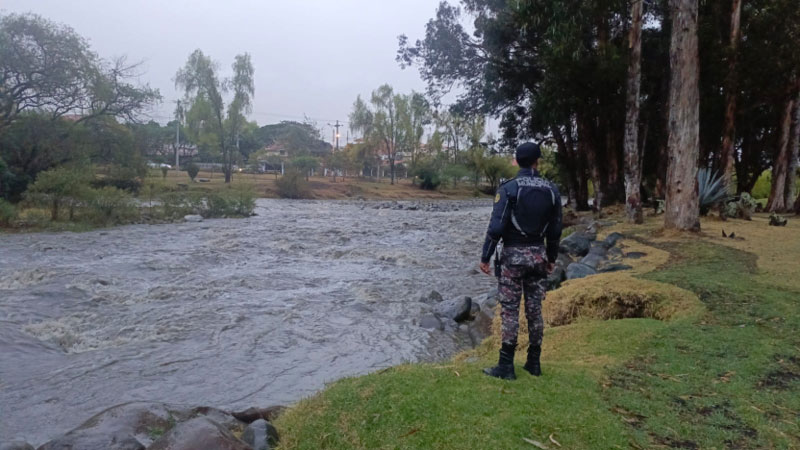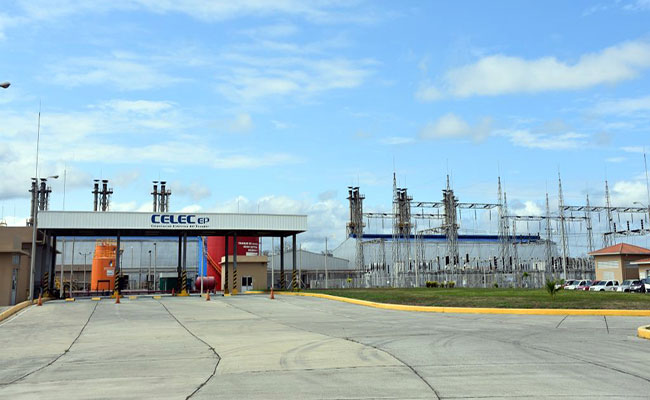Savoring Cuenca: How expats are mastering local flavors and creating culinary adventures
By Jim Smith
Moving to Ecuador can be an exciting adventure, especially when it comes to experiencing the local food. For expats living in cities like Cuenca, meal preparation and dining out offer unique opportunities to blend your home country’s flavors with Ecuadorian traditions. Whether you’re cooking at home or exploring the vibrant local markets, how you handle food in your new home will affect your experience of Ecuadorian life.
 This article will explore the different ways expats in Ecuador prepare and enjoy meals, using examples of local foods, stores, and ingredients. Whether you love cooking or are just starting to explore the flavors of Ecuador, these tips will help you create a healthy and enjoyable eating routine.
This article will explore the different ways expats in Ecuador prepare and enjoy meals, using examples of local foods, stores, and ingredients. Whether you love cooking or are just starting to explore the flavors of Ecuador, these tips will help you create a healthy and enjoyable eating routine.
If you prefer just to listen to this as an audio article, please click here.
Home-Cooked Meals
Good Things:
-
- Fresh Ingredients: Ecuador has a wide variety of fresh produce available year-round. In Cuenca, you can find fresh fruits and vegetables like avocados, plantains, and Andean potatoes at local markets like Mercado 10 de Agosto.
- Affordable: Cooking at home can be cheaper than dining out regularly, especially when you buy locally grown ingredients such as quinoa, beans, and yuca (cassava).
- Cultural Fusion: You can blend Ecuadorian ingredients with recipes from home. For example, you can add aji (a type of local hot sauce) to your meals for a spicy twist, though keep in mind that many Ecuadorians don’t typically eat very spicy food.
Challenges:
-
- Finding Familiar Ingredients: In Ecuador, you might struggle to find certain spices or ingredients from your home country, like cinnamon sticks, or particular types of pasta. However, stores like SuperMaxi or Coral Hipermercado carry some imported products.
- Kitchen Setup: Some rental homes in Cuenca may not have the kitchen appliances you’re used to, such as ovens or microwaves, so you might need to adapt to a simpler cooking style.
- Time-Consuming: Cooking from scratch takes time, especially if you’re learning to use local ingredients and Ecuadorian cooking methods like making locro de papas (potato soup) or encebollado (fish stew).
Local Markets and Street Food
Good Things:
-
- Affordable and Fresh: Local markets like Feria Libre in Cuenca offer affordable fresh produce, meat, and seafood. You can try fruits like mora (blackberries), chirimoya, or granadilla.
- Cultural Experience: Shopping at the local market or grabbing street food like empanadas de viento (fried cheese empanadas) or hornado (roast pork) gives you a taste of Ecuadorian culture.
- Quick and Convenient: Street food is great when you’re on the go. You can easily find humitas (steamed corn cakes) or quimbolitos (sweet steamed cakes) while exploring the city.
Challenges:
-
- Hygiene: While delicious, street food may not always meet the hygiene standards you’re used to, so it’s important to be cautious.
- Not Always Healthy: Many Ecuadorian street foods can be high in oils and carbs, so it might be hard to find balanced meals when eating on the street.
- Language Barrier: Shopping at local markets can be tricky if you don’t speak Spanish well. Learning basic phrases like asking for the price (“¿Cuánto cuesta?”) can be helpful.
Expat or International Grocery Stores
Good Things:
-
- Imported Goods: Stores like SuperMaxi in Cuenca offer a selection of imported products like Italian pasta, American cereals, or peanut butter, so you can enjoy some familiar foods.
- Special Ingredients: If you have specific dietary needs, such as gluten-free or organic products, stores like Gran Roca might carry these items.
- Comfort Foods: Having access to familiar ingredients like oatmeal, spices, or cheese can make your transition to Ecuador a little smoother.
Challenges:
-
- Expensive: Imported goods can be pricey compared to local products, so it’s a good idea to balance your shopping between local markets and expat stores.
- Limited Availability: These stores are mainly found in larger cities like Cuenca, so expats living in smaller towns may have limited access.
- Less Adaptation: Relying too much on expat stores might keep you from trying and enjoying Ecuadorian foods like mote (corn) or llapingachos (potato patties).
Dining Out at Restaurants
Good Things:
-
- Variety of Cuisines: Cuenca has a range of restaurants serving Ecuadorian food as well as international options like Italian, Mexican, or Chinese. You can try Ecuadorian classics like ceviche or enjoy international favorites at places like Café Eucalyptus.
- Socializing: Dining out is a great way to meet other expats or locals and share experiences. Popular spots like Kolo Restaurant are often frequented by the expat community.
- Convenient: Eating out means no cooking or cleaning, which is ideal if you’re busy or not in the mood to cook.
Challenges:
-
- Expensive: Regularly eating out, especially at restaurants that cater to expats, can be expensive.
- Health Considerations: Restaurant meals in Ecuador might not always be aligned with your health goals, as many dishes are fried or heavy in carbs.
- Different Dining Customs: In Ecuador, tipping is not always expected, and dining hours may be different from what you’re used to.
Meal Delivery Services
Good Things:
-
- Convenient: Cuenca has delivery services like PedidosYa or Glovo that bring meals to your door, offering a variety of local and international cuisines.
- Dietary Options: Some services let you choose from vegetarian, gluten-free, or low-carb meals, so you can stick to your dietary preferences.
- Saves Time: Delivery is perfect for expats with busy schedules or those who don’t have the kitchen tools to cook elaborate meals.
Challenges:
-
- Expensive: Using meal delivery regularly can add up, especially if there are delivery fees.
- Inconsistent Quality: The quality of food can vary between restaurants, so your experience may differ from one meal to the next.
- Limited Service Areas: Delivery services may not be available everywhere, especially in more rural areas outside Cuenca.
Social and Community-Based Cooking
Good Things:
-
- Social Interaction: Joining community cooking events or food clubs with other expats is a great way to meet people and share recipes.
- Cultural Exchange: Cooking together with locals gives you the chance to learn how to make Ecuadorian dishes like fritada (fried pork) or fanesca (a traditional Easter soup).
- Support Network: Being part of a cooking group means you can share tips and experiences about cooking in Ecuador, making the adjustment easier.
Challenges:
-
- Availability: These events may not always be easy to find in smaller communities, but Cuenca has several expat groups that organize such activities.
- Group Dynamics: If you’re not a fan of group cooking, this might not be your preferred way of preparing meals.
- Logistics: Organizing and attending events may require travel or scheduling adjustments.
Strategy for Meal Preparation and Eating for Expats in Ecuador
Understand Your Preferences and Local Resources:
- Know your dietary needs and what’s available locally. Explore fresh produce like chochos (lupini beans), camote (sweet potato), and herbs like cilantro and hierba buena (spearmint).
- Make sure your kitchen has the basic tools you need to cook.
- Visit local markets like Mercado 12 de Abril to find the best deals on fresh, local produce.
Mix Home Cooking with Local Experiences:
- Blend local ingredients into your meals. For example, you can add locally grown herbs to your soups or use Ecuadorian cheese in your sandwiches.
- Keep trying new ingredients like maracuyá (passion fruit) or naranjilla to expand your culinary palette.
- Prioritize food safety by washing produce carefully and choosing reputable vendors.
Use Expat Stores Wisely:
- Buy specialty items like spices or imported sauces at expat stores when needed, but balance this with local options.
- Stick to a budget by avoiding too many imported products and exploring cheaper, locally grown alternatives.
Engage with Local Dining:
- Try local Ecuadorian dishes like seco de pollo (chicken stew) or patacones (fried plantains) at restaurants to learn more about the culture.
- Use dining out as a social experience by connecting with other expats at popular restaurants like El Mercado or Kolo.
Join Cooking Groups and Events:
- Look for expat cooking groups or food clubs to share recipes and learn new techniques.
- Participate in potlucks or attend cooking classes to dive deeper into the local cuisine.
Stay Flexible and Keep Learning:
- Stay open to adapting your eating habits over time.
- Keep exploring new foods and cooking methods, making the most of your time in Ecuador.
This guide will help you enjoy Ecuador’s food scene while balancing health, budget, and social experiences, ensuring a satisfying and enriching culinary experience in your new home.
For a more in depth look at this subject from a global perspective click here.
_________________
Jim Smith is CEO of YCHANGE International a small business consultancy and past Chairman of the Board of Commissioners of Home Forward (the Portland Housing Authority). He currently resides in Cuenca.



















